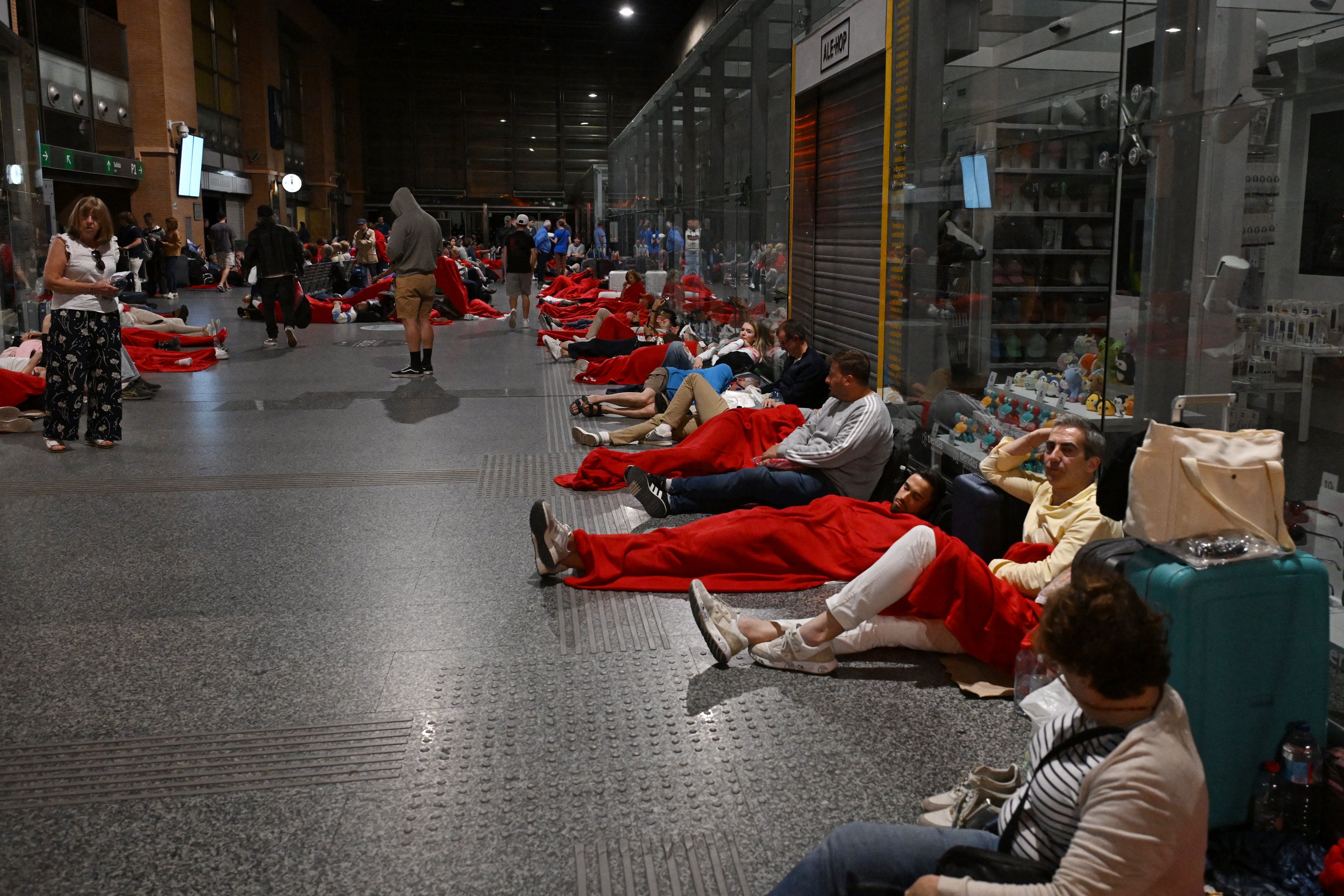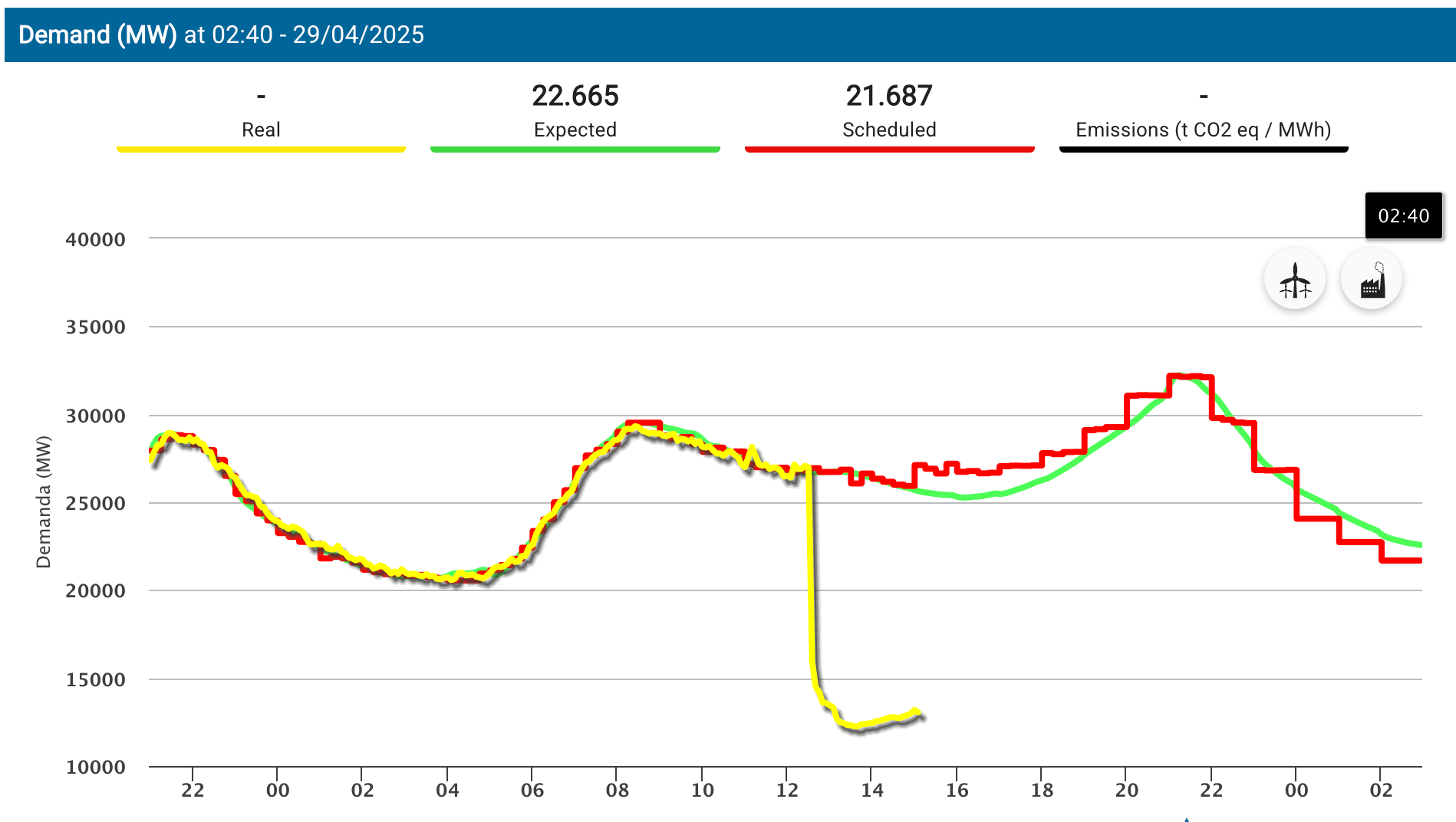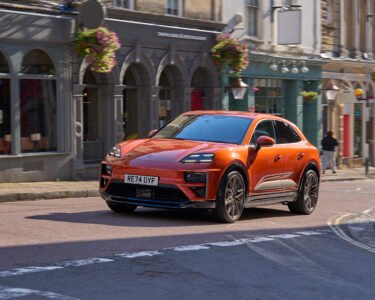When the power suddenly shut off for tens of millions of people across Spain and Portugal on Monday, many faced a series of unexpected conundrums. To figure out what was going on – and learn whether the outage was limited to their building, street, or something much bigger – some turned to their phones, only to realise that the networks were down.
With no access to TV or the internet, there was soon a rush to buy battery-powered analogue radios, but even this was not simple. With digital payment systems down, the only way to pay for them was with cash, and the only way to get cash was through cash machines – which were also out of order.
It was a confusing and chaotic demonstration of just how deeply dependent we have become on the electricity grid. Beyond the breakdown in access to information and electronic payments, other critical infrastructure also collapsed. Entire industries seized up as factories and supply chains were forced to shut down operations, schools and universities closed, and transport systems stopped working as planes were grounded, trains were stranded and even traffic lights failed to function.
There were individual traumas, with people stuck in lifts for hours, trapped in sweltering train carriages, or left dangling in gondolas high up in the mountains.
There were even blackout-related casualties, with three family members reportedly dying from carbon monoxide poisoning at their home in northwest Spain after using a generator for emergency power. Another woman died in Madrid after a candle set fire to her apartment.
Some clean energy detractors attempted to falsely blame the power outage on Spain’s reliance on renewables. But the country has one of the most enviable energy mixes in the world: on Monday, before the outage hit, Spain was running on 75 per cent wind and solar and 11 per cent nuclear. The issue appears to be a result of network connectivity issues, and nothing to do with clean energy.
What clean energy can offer, however, is protection against precisely this kind of widespread failure.

Recent breakthroughs in renewable technology mean we are finally realising the vast potential of solar energy on a commercial scale, and could be on the cusp of transforming our homes into fully self-sufficient power stations.
These technologies come in the form of products that are already widely available, like home-installed battery packs that can store days’ worth of energy, and roof-mounted solar panels that can charge them.
Beyond residential buildings, another increasingly popular way to protect against blackouts without using noisy and polluting backup generators is the use of microgrids. Adopted by hospitals, college campuses and apartment complexes, these self-contained grids use a combination of solar arrays and massive battery storage systems to run autonomously from the main grid. Such systems are even able to provide power to surrounding neighbourhoods in an emergency.

One key piece of support for these building-level and microgrid systems is already in place for many: electric vehicles. Through bidirectional charging capabilities, EVs can serve as mobile power stations, supplying energy back to the home during outages, or even feeding it into the grid.
Models like the Ford F-150 Lightning and Nissan Leaf already come equipped with vehicle-to-home and vehicle-to-grid capabilities, allowing them to power a house for several days, or stabilise the wider grid during times of peak demand or emergency.
As sales of electric vehicles and plug-in hybrids accelerate worldwide, with numbers jumping 25 per cent in 2024, the idle energy stored in parked cars throughout a country could provide a vital backup source of power. Some projections suggest that by 2030, the combined battery capacity of EVs could even exceed that of all utility-scale battery installations.
Old EV batteries are also now being repurposed for home energy systems. Batteries are typically discarded when they fall to around 75 per cent of their original capacity, which is not ideal for driving range, but is more than capable of storing plenty of energy for domestic use at a fraction of the cost of new battery packs.
There are also emerging technologies that could be used to charge these batteries on a massive scale. Researchers are already exploring ways to use wonder materials like perovskite and quantum dots to create spray-on solar cells that could be used to paint and power a building. New efficiency records have also recently been achieved for photovoltaic windows, which allow windows and glass facades to be used for energy production. Combined together, they could allow all parts of a building touched by the Sun to generate power.
By some estimates, the Sun beams enough energy to Earth in just one hour to power the whole planet for an entire year. This enormous potential, combined with recent advances and the rollout of renewable technologies on a domestic scale, could turn the concept of living off-grid from an alternative lifestyle choice, to a cheap and sustainable way of living that safeguards against blackouts.
Combined with other relatively new technologies, like space-based internet services from Starlink, Eutelsat and Amazon’s newly-launched Kuiper, it will be possible to be nearly entirely self-reliant during grid failures.
And while implementing these solutions might not support everything when the grid goes down, they can do enough to sustain the basic requirements for a functioning household and society during emergencies. A potential catastrophe would become a mere inconvenience – and there would be no need to scramble for radios.




